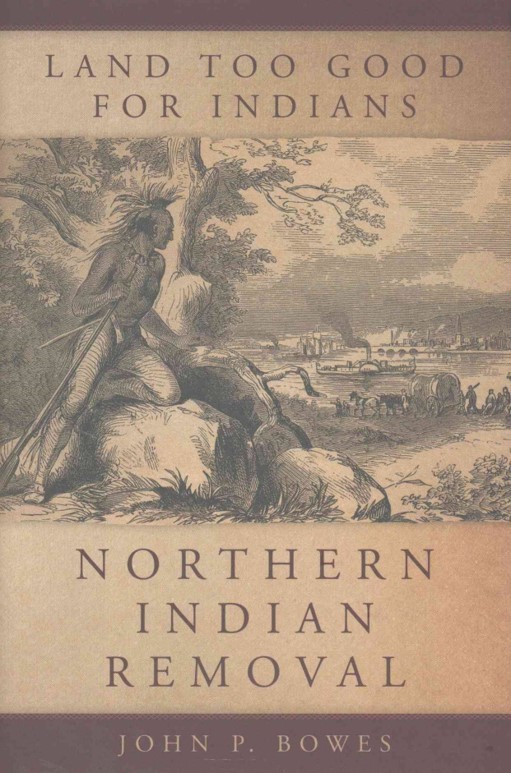Book review: Land Too Good For Indians – Northern Indian Removal

Reviewed by Karl Hele
Land Too Good For Indians offers the reader an examination of northern Indian removal that has largely escaped mainstream memory. Thus this work, while a general overview of the complexities surrounding removal in the north, serves to undo colonial acts of forgetting. Bowes’ survey nicely argues that removal in the north, while similar to the Trail of Tears, was heavily influenced by Indian actions and reactions as well as federal, state, and local non-Indian actors. To illustrate his argument, Bowes follows the removal and attempted removals of northern Indians – the Wyandot, Seneca-Cayugas, Delawares, Potawatomi, Odawa and Ojibwa – from the old northwest – essentially the modern states of Ohio, Illinois, Michigan, and Indiana. He traces the often multiple removals of these nations by examining how the ever encroaching settler-colonists’ rapacious hunger for land forced people and communities to relocate time and time again. Additionally, throughout the work is woven the ever changing rhetoric voiced by settlers either in favour or against removal. This changing rhetoric is made apparent in the final chapter and afterward where Bowes notes that the various policies of the U.S. governments whether they were labelled removal, allotment, severality, or some other term were simply about ensuring that lands were turned over to settler control and the Indians removed.
Although the book is well argued with excellent narrative following the various removals throughout the 1800s, the section dealing with Michigan was disappointing. Seeing “Northern Indians” in the title and a chapter about Michigan’s Odawas and Chippewas I was excited to potentially learn about these removals affects on the Upper Peninsula (UP) of Michigan. Unfortunately, for Bowes “Northern” means south of Mackinac. I will grant that Bowes does show that the settlers of Michigan’s desire to prevent the removal of Indians from the state was more about self interest and economy rather than true philanthropy or humanism. He also adds that while the settlers did not want the Indians removed from the state, the presence of First Nations around the larger settlements of whites – i.e. Detroit area – was unwelcome and removal from that area undertaken albeit internally to Michigan. Nonetheless, some of the arguments and conclusions about the Lower Peninsula’s efforts to remove and retain an Indigenous presence may be applicable to the UP. However, the lack of the UPs’ overall presence in Bowes’ study generally reflects the absence of the UP in American Indian histories. As such, a study of the UP in the context of removal remains to be undertaken.
Regardless of my disappointment in his discussions of Michigan, Land Too Good For Indians is an excellent study of removal in the old northwest that offers insights into how the process unfolded in ways that were dependent upon an interesting combination of rhetoric, local or regional actions, and Indian responses. I was also impressed that in the final chapter and afterward Bowes stresses not only the constant upheaval experienced by Indians at the hands of settlers but the survival of Indigenous peoples.
John P. Bowes, Land Too Good For Indians: Northern Indian Removal. Norman: University of Oklahoma Press, 2016.


